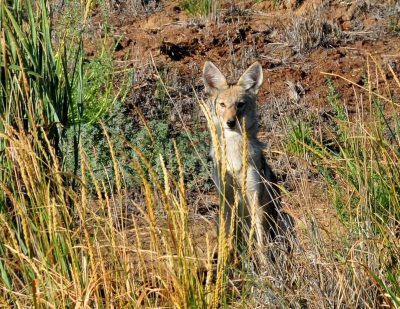US Agriculture Department’s ‘Wildlife Services’ Killed Approximately 1.2 Million Native Animals in 2019

The arm of the U.S. Department of Agriculture known as Wildlife Services killed approximately 1.2 million native animals in 2019, according to new data released by the program this week.
The multimillion-dollar federal wildlife-killing program targets wolves, coyotes, cougars, birds and other wild animals for destruction, primarily to benefit the agriculture industry in states like Texas, Colorado and Idaho. Of the 2.2 million animals killed last year, approximately 1.2 million were native wildlife species.
“Year after year Wildlife Services continues to needlessly kill wildlife, even though effective tools exist to prevent most conflicts,” said Collette Adkins, carnivore conservation director at the Center for Biological Diversity. “The scientific consensus is that killing carnivores like coyotes to benefit the livestock industry just leads to more conflicts and more killing. This taxpayer-funded slaughter needs to stop.”
According to the latest report, the federal program last year intentionally killed 301 gray wolves; 61,882 adult coyotes, plus an unknown number of coyote pups in 251 destroyed dens; 364,734 red-winged blackbirds; 393 black bears; 300 mountain lions; 777 bobcats; 124 river otters plus 489 killed “unintentionally”; 2,447 foxes, plus an unknown number of red fox pups in 94 dens; and 24,543 beavers.
The program also killed 14,098 prairie dogs outright, as well as an unknown number killed in more than 35,226 burrows that were destroyed or fumigated. These figures almost certainly underestimate the actual number of animals killed, as program insiders have revealed that Wildlife Services kills many more animals than it reports.
According to the new data, the wildlife-killing program unintentionally killed more than 2,624 animals in 2019, including bears, bobcats, mountain lions, a wolf, foxes, muskrats, otters, porcupines, raccoons and turtles. Its killing of non-target birds included ducks, eagles, swallows, herons and turkeys.
Dozens of domestic animals, including pets and livestock, were also killed or caught. Such data reveals the indiscriminate nature of leghold traps, snares, poisons and other methods used by federal agents.
Last year Wildlife Services poisoned nearly 8,200 animals using M-44 cyanide bombs. Of these deaths 209 were unintentional, including those of a black bear, two dogs and dozens of foxes. Its use of M-44s has increased since 2018, when the program used M-44s to kill 6,579 animals.
“I’m sickened by the thought of intelligent and beautiful animals like wolves and mountain lions suffering and dying from poisons and in strangulation snares and cruel leghold traps,” Adkins said. “We’re doing everything we can to shut down the Wildlife Services program.”
The wildlife-killing program contributed to the decline of gray wolves, Mexican wolves, black-footed ferrets, black-tailed prairie dogs and other imperiled species during the first half of the 1900s and continues to impede their recovery today.
*
Note to readers: please click the share buttons above or below. Forward this article to your email lists. Crosspost on your blog site, internet forums. etc.
Featured image: Coyote pup photo by Tom Koerner, USFWS.

